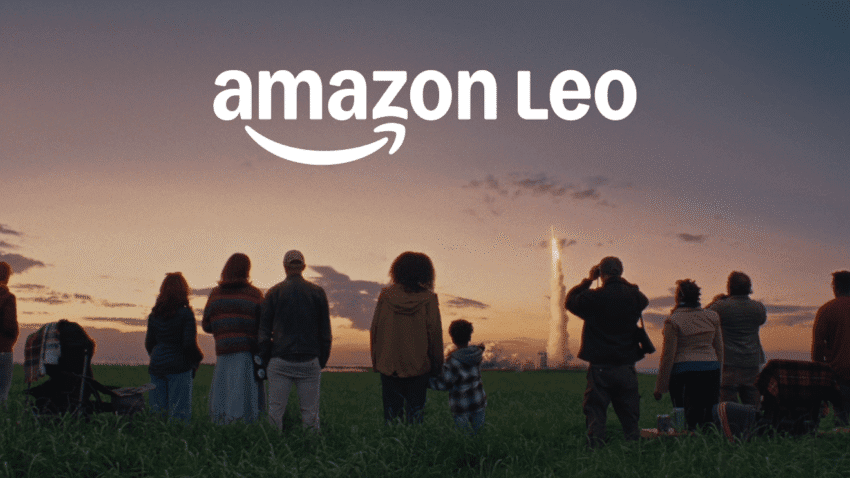
starlink rival project kuiper rebrands to amazon Amazon has officially rebranded its satellite internet initiative, Project Kuiper, to Amazon Leo, marking a significant milestone in its efforts to compete in the low-Earth orbit (LEO) satellite market.
starlink rival project kuiper rebrands to amazon
Understanding Amazon Leo
The rebranding to Amazon Leo is a strategic move that highlights the project’s focus on low-Earth orbit technology. The term “Leo” is derived from Low-Earth Orbit, which refers to orbits at altitudes of 1,200 miles (2,000 kilometers) or less. This is the operational zone for Amazon’s planned constellation of 153 satellites, designed to deliver high-speed internet services globally.
Background of Project Kuiper
Initially named Project Kuiper, the initiative was named after the Kuiper Belt, an area in the outer solar system that contains many small celestial bodies. However, the new name, Amazon Leo, aligns more closely with the project’s core mission of providing internet connectivity from low-Earth orbit. This rebranding reflects Amazon’s commitment to making high-speed internet accessible to underserved regions.
Launch Progress and Future Plans
Amazon Leo has made significant strides in its launch schedule, with six successful missions completed to date. Among these, three launches utilized SpaceX’s Falcon 9 rockets, deploying a total of 72 satellites into orbit. This partnership with SpaceX, a leading player in the aerospace industry, underscores the collaborative efforts necessary to achieve ambitious space goals.
Looking ahead, Amazon plans to conduct over 80 missions, ultimately deploying approximately 3,000 satellites. This ambitious plan aims to create a robust satellite network capable of providing internet services to millions of users worldwide. The scale of this operation is comparable to that of SpaceX’s Starlink, which recently celebrated the launch of its 10,000th satellite.
Competitive Landscape
Amazon Leo enters a competitive landscape dominated by SpaceX’s Starlink. Starlink has established itself as a leader in the satellite internet market, providing service to customers in various regions, including rural and remote areas. The competition between Amazon Leo and Starlink is not just about technology; it also involves market strategy, pricing, and customer service.
Service Goals and Promises
Amazon has positioned Leo as a solution to the global digital divide, promising to extend fast and reliable internet access to areas that currently lack adequate connectivity. This goal mirrors the mission of Starlink, which has focused on providing internet access to underserved communities. Both companies recognize the potential for satellite internet to transform lives by enabling access to education, healthcare, and economic opportunities.
Challenges Ahead
While the promise of enhanced internet access is compelling, the deployment of tens of thousands of satellites raises significant concerns. The potential for space debris is one of the most pressing issues. As more satellites are launched into orbit, the risk of collisions increases, which could lead to the creation of even more debris. This debris poses a threat not only to other satellites but also to manned missions, such as those conducted by NASA and other space agencies.
Experts have raised alarms about the long-term sustainability of such large satellite constellations. The crowded nature of low-Earth orbit could lead to a scenario where collisions become more frequent, complicating space traffic management and increasing the risk to astronauts aboard the International Space Station (ISS) and future missions to the Moon and Mars.
Regulatory and Environmental Considerations
The expansion of satellite networks like Amazon Leo and Starlink also brings regulatory challenges. Governments around the world are grappling with how to manage the increasing number of satellites in orbit. Regulatory bodies must establish guidelines to ensure safe operations and mitigate the risks associated with space debris.
Environmental concerns are another critical aspect of this discussion. The launch of thousands of satellites contributes to carbon emissions and other environmental impacts associated with rocket launches. As companies like Amazon and SpaceX push forward with their plans, they will need to address these environmental challenges and demonstrate a commitment to sustainability.
Stakeholder Reactions
The rebranding of Project Kuiper to Amazon Leo has elicited a range of reactions from stakeholders in the technology and telecommunications sectors. Industry analysts have noted that the new name may help Amazon better communicate its mission to potential customers and investors. The shift from a name associated with an asteroid belt to one that directly references low-Earth orbit could enhance public understanding of the project’s objectives.
Telecommunications companies and internet service providers may view Amazon Leo as both a challenge and an opportunity. While the entry of a tech giant like Amazon into the satellite internet market could disrupt traditional business models, it also presents opportunities for partnerships and collaborations. Companies that can adapt to the changing landscape may find ways to leverage the technology to improve their own offerings.
Public Perception and Consumer Impact
Public perception of Amazon Leo will play a crucial role in its success. Consumers are increasingly aware of the digital divide and the importance of internet access in today’s world. If Amazon Leo can deliver on its promise of reliable and fast internet, it may gain a loyal customer base, particularly in underserved regions.
However, concerns about data privacy and corporate responsibility may also influence consumer attitudes. As Amazon expands its reach into the telecommunications sector, it will need to address these concerns transparently to build trust with potential users.
The Future of Satellite Internet
The launch of Amazon Leo is part of a broader trend toward satellite internet as a viable solution for global connectivity. As technology advances and costs decrease, more companies are entering the market, each with unique approaches to delivering internet services from space. The competition is likely to drive innovation, improve service quality, and lower prices for consumers.
In addition to Amazon Leo and Starlink, other players are also making strides in the satellite internet space. Companies like OneWeb and Telesat are developing their own satellite constellations, further intensifying the competition. This influx of new entrants may lead to a more diverse range of services and pricing options for consumers.
Conclusion
As Amazon Leo prepares for its ambitious launch schedule, the implications for the satellite internet market are profound. The rebranding from Project Kuiper to Amazon Leo signifies a renewed focus on low-Earth orbit technology and the potential to bridge the digital divide. However, the challenges associated with satellite deployment, including space debris and regulatory hurdles, must be addressed to ensure the long-term sustainability of these initiatives.
Ultimately, the success of Amazon Leo will depend on its ability to deliver on its promises while navigating the complexities of the satellite internet landscape. As competition heats up, consumers may benefit from improved access to high-speed internet, but the industry must remain vigilant in addressing the potential risks associated with such rapid expansion.
Source: Original report
Was this helpful?
Last Modified: November 14, 2025 at 4:38 am
1 views















